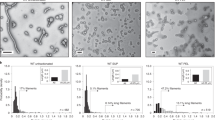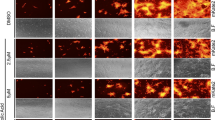Abstract
SOME success has already been achieved in the chemotherapy of infections caused by the larger viruses, but compounds with an equal degree of activity against the smaller viruses seem much more difficult to find. It is therefore natural to enquire whether there is any relationship between the size of virus particles and the activity of chemotherapeutic agents. As a working hypothesis one may adopt the postulates that (a) a compound is maximally efficient if 1 molecule can inhibit the maturation of 1 virus particle, and (b) that to obtain maximal activity each volume of the cytoplasm of the infected cell equivalent to the volume of a virus particle must contain 1 molecule of the compound. From these postulates the minimal inhibitory concentration of a maximally effective compound can be calculated. Thus, 1 molecule must be present in a volume of 4πr3/3, where r is the radius of the virus particle in mμ. In 1 l. there will be 3 × 1024/47πr3 molecules. Since there are 0.606 × 1024 molecules in a gram molecule, this represents a molarity of (0.808πr3)−1, whence log molarity = −0.4045 − 3 log r.
This is a preview of subscription content, access via your institution
Access options
Subscribe to this journal
Receive 51 print issues and online access
$199.00 per year
only $3.90 per issue
Buy this article
- Purchase on Springer Link
- Instant access to full article PDF
Prices may be subject to local taxes which are calculated during checkout
Similar content being viewed by others
References
Bauer, D. J. (unpublished work)
Loh, P. C., and Payne, F. E., Virology, 25, 575 (1965).
Kaufman, H. E., and Maloney, E. D., Proc. Soc. Exp. Biol. and Med., 112, 4 (1963).
Loddo, B., Muntoni, S., and Ferrari, W., Nature, 198, 510 (1963).
Rapp, F., and Benyesh-Melnick, M., Science, 141, 433 (1963).
Loh, P. C., and Payne, F. E., Virology, 25, 560 (1965).
Wood, T. R., Ann. N.Y. Acad. Sci., 130, 419 (1965).
Plotkin, S. A., Arch. f. d. ges. Virusforsch., 16, 438 (1965).
Tamm, I., Bablanian, R., Nemes, M. M., Shunk, C. H., Robinson, F. M., and Folkers, K., J. Exp. Med., 113, 625 (1961).
Author information
Authors and Affiliations
Rights and permissions
About this article
Cite this article
BAUER, D. Possible Correlation between Virus Particle Size and Activity of Antiviral Agents. Nature 209, 639–640 (1966). https://doi.org/10.1038/209639a0
Issue Date:
DOI: https://doi.org/10.1038/209639a0
Comments
By submitting a comment you agree to abide by our Terms and Community Guidelines. If you find something abusive or that does not comply with our terms or guidelines please flag it as inappropriate.



